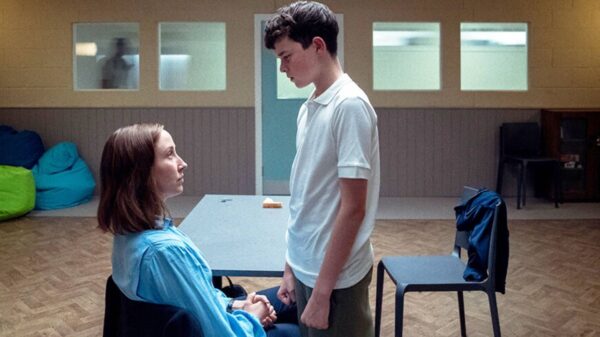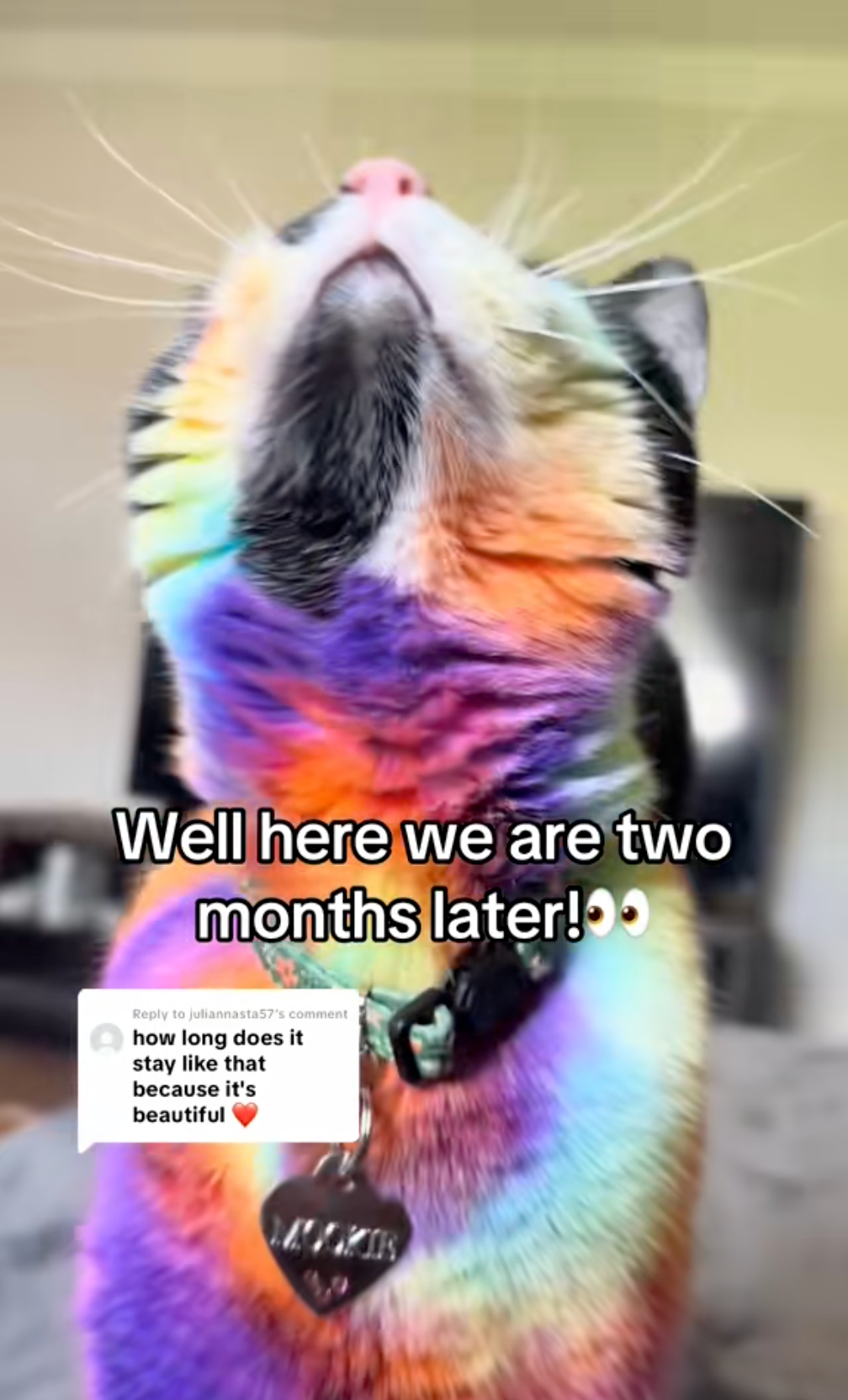A pet owner has ignited a heated debate online after dyeing their cat’s fur in a vibrant rainbow pattern to celebrate Pride Month. The video, shared by TikTok user @cattledoggdallas, has amassed over 1.9 million views, showcasing the transformed black cat with streaks of pink, blue, purple, orange, and yellow. The creator playfully questioned whether “it’s REALLY Pride Month without a rainbow?” while promising more creative grooming ideas in the future.
The colorful makeover has divided opinions, with many viewers admiring the artistic expression while others raised concerns regarding the safety and ethics of dyeing pets. As the debate intensified, some commenters speculated about the longevity of the colors, prompting @cattledoggdallas to provide an update. They confirmed that two months after the initial dye job, the colors had faded but remained visible, leading them to express satisfaction with the outcome.
Is Dyeing Pets Safe?
Concerns regarding the safety of dyeing pets are well-founded. A veterinarian spoke to DailyMail, stating that the practice is controversial and depends on various factors, including the type of dye used and the individual animal’s health. According to Rover, natural or pet-safe dyes may sometimes be used without immediate harm, but pet owners should prioritize their animals’ well-being and carefully consider the potential risks.
Pets can have sensitive skin that may react adversely to dyes, leading to irritation or allergic reactions. The dyeing process can also be stressful for animals not accustomed to prolonged handling. Risks remain even when using pet-safe dyes, as accidental ingestion or skin issues could occur. Critics argue that subjecting an animal to such a process solely for aesthetic purposes is unnecessary and raises ethical concerns.
For those considering dyeing their pets, TheVets recommends consulting a veterinarian or a professional groomer to ensure the chosen product is safe. If opting for a DIY approach, they advise using dyes specifically formulated for animals and performing a patch test on a small area of skin before applying it to the entire coat.
Alternatives to full dye jobs exist, such as using non-toxic food coloring or chalk, which can achieve a similar effect with reduced risks. Accessories like bows or bandanas can also provide a playful touch without impacting the pet’s fur.
Public Reaction and Previous Controversies
The decision to dye pets has faced criticism in the past. @cattledoggdallas is not the first owner to encounter backlash for coloring their animal in bold shades. In December 2021, a dog owner shared a video of their pet dyed bright red, leading to widespread concern among viewers about the safety and well-being of the animal.
Comments on @cattledoggdallas‘s video reflect a similar division of opinion. While some viewers expressed sympathy for the cat, stating, “Cats are not toys,” others defended the owner, suggesting that the cat seemed well cared for and unbothered by the dye. One commenter remarked, “Guys, the dye must’ve been pet-friendly. The cat looks completely unbothered, no scratching or signs of discomfort.”
The colorful feline even drew comparisons to the whimsical designs of Lisa Frank, with users dubbing it a “real life Lisa Frank” creation.
As discussions around pet dyeing continue, the phenomenon highlights the broader conversation about animal welfare and the responsibilities pet owners hold in caring for their companions. The internet remains a platform for both creative expression and critical discourse, reflecting diverse perspectives on this colorful, yet contentious topic.








































































